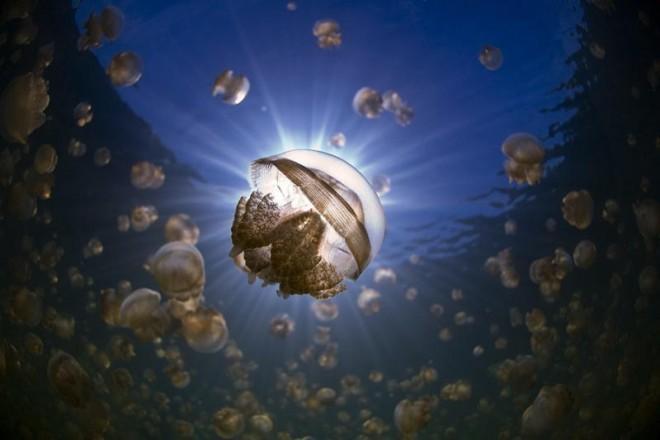
For starters, jellyfish aren't actually fish, since they are invertebrates. For this reason, many people think they should be called "sea jellies" instead.

Because of its incredibly think skin, a jellyfish can get its oxygen from diffusion, and therefore doesn’t need a respiratory system.
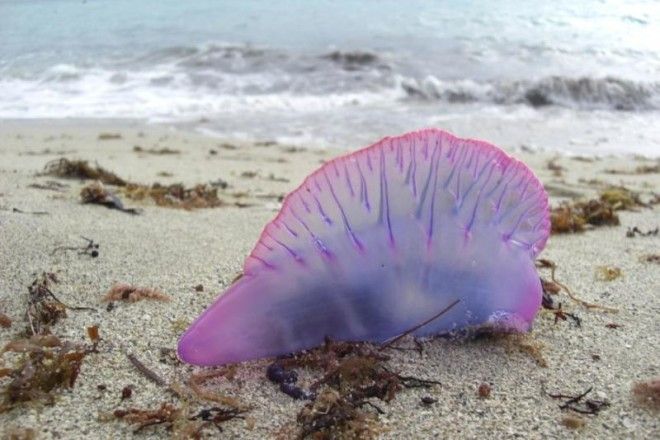
Jellyfish are literally boneless, brainless, and heartless, and most are transparent.
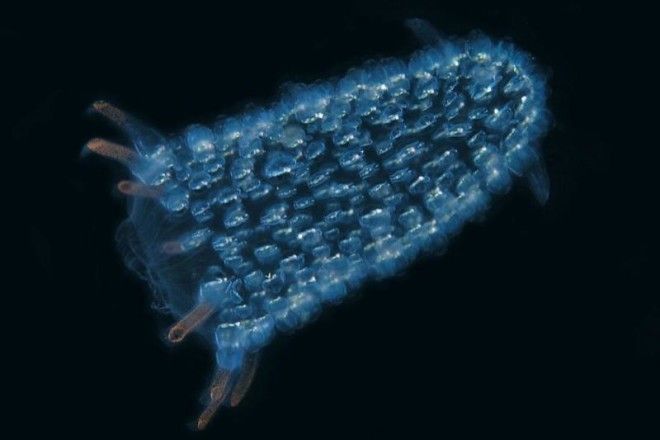
Though they might not have brains, jellyfish do have a nervous system, or, nerve net, with receptors that can detect light, vibrations, and chemicals in the water.
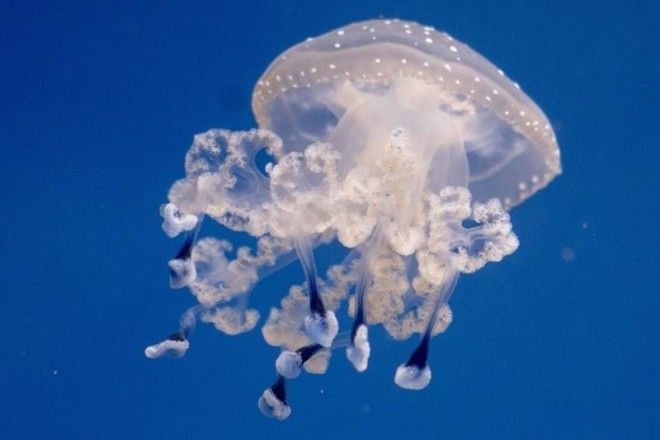
Some jellyfish have ocelli, which are eye-like organs that are light-sensitive and can detect up and down motions. Ocelli appear as dark pigmented spots on the jellyfish.
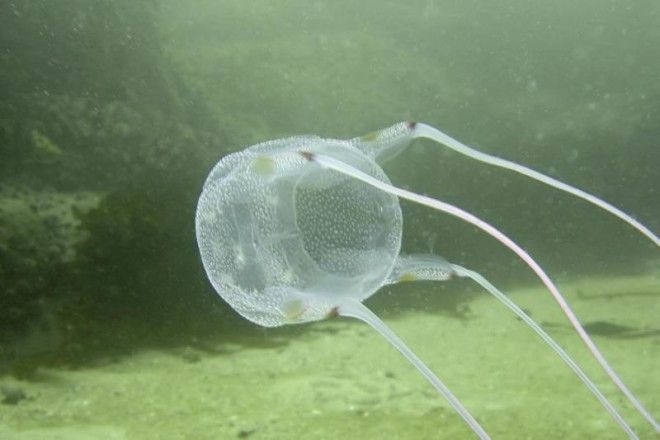
The box jellyfish has more advanced vision: its 24 eyes give it a 360-degree view of its environment. It is also the world's most dangerous jellyfish, and the most venomous marine creature. Certain species of box jellyfish can kill a person in just a couple of minutes.
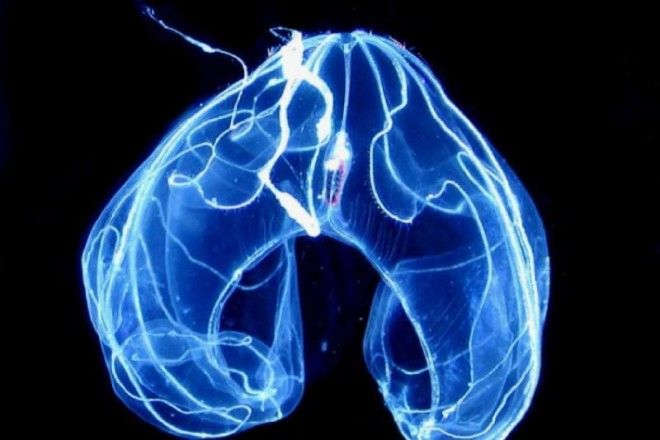
Most jellyfish are found in warm, shallow coastal waters, but there are a few species that live in the cold depths of 30,000 feet.
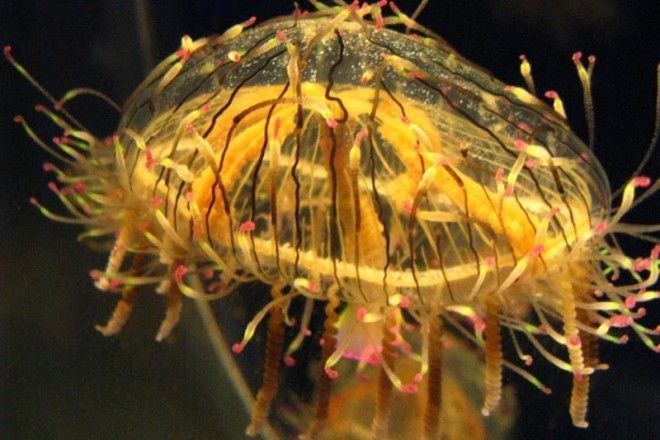
Jellyfish can reproduce both sexually and asexually.
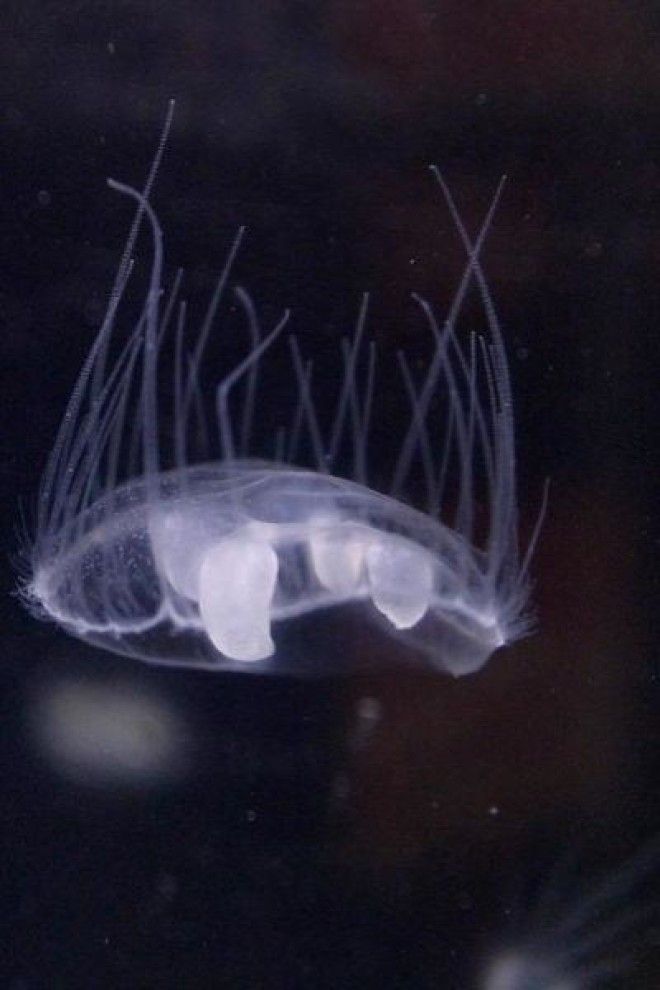
More than any other creature, jellyfish rule the water. The scyphozoan class of jellyfish are found in every ocean in the world, and the hydrozoan class can flourish in freshwater lakes and ponds.
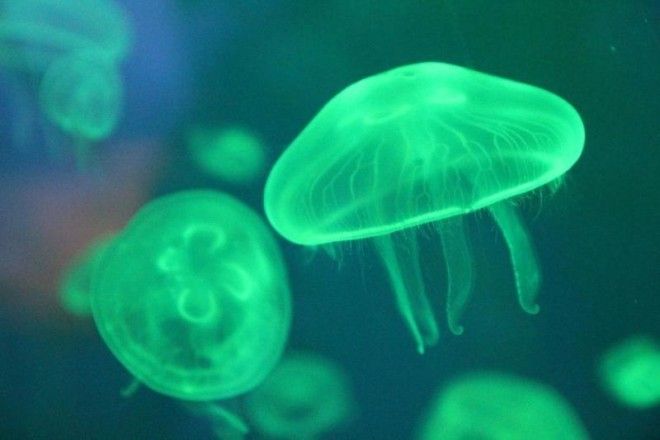
Green fluorescent proteins (GFPs) from the Aequorea victoria jellyfish species have transformed bio-medical research. The glow-in-the-dark proteins can illuminate specific proteins within the human body to track microscopic activity (for instance, cancer growth).
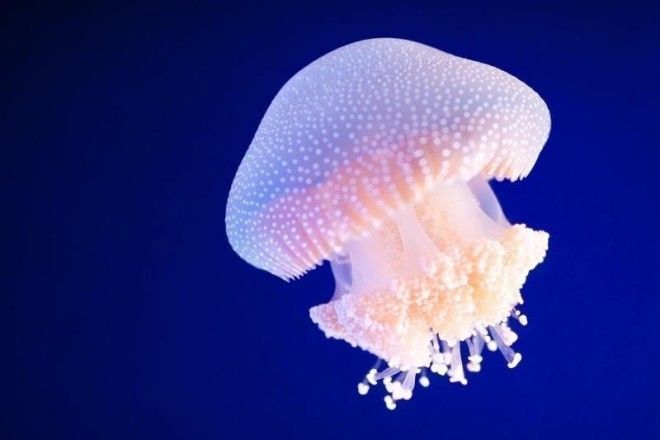
Jellyfish spawn at around the same time every day, usually dusk or dawn.
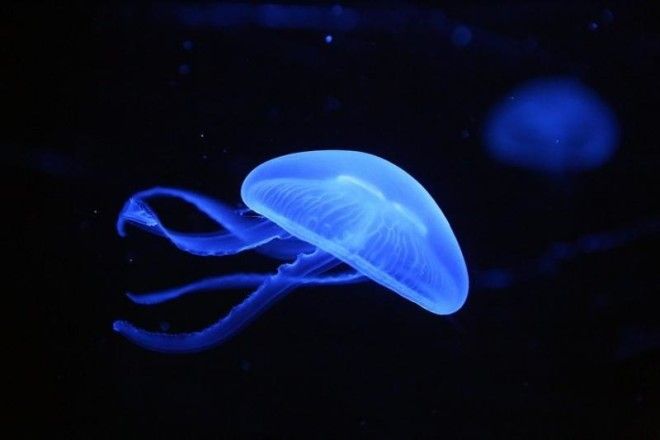
Most jellyfish live a relatively short life that ranges from a few days to less than a year. Some of the more minuscule only live for a few hours.

Jellyfish are between 95 and 98 percent water.
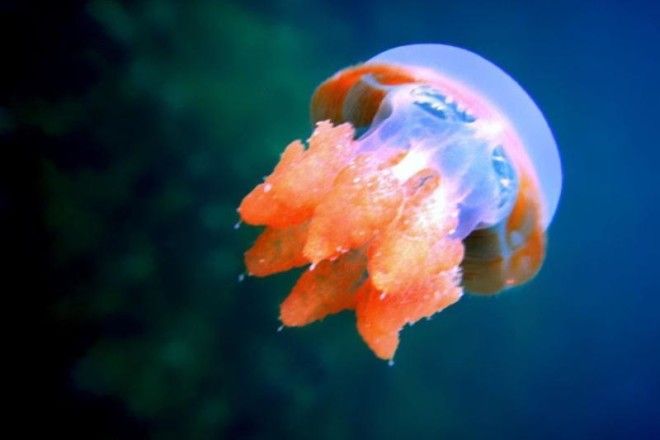
Despite their poisonous defenses, jellyfish have many predators. Sharks, tuna, swordfish, sea turtles, and even salmon have been known to prey upon the jellyfish.

Considered the largest jellyfish species, the lion’s mane jellyfish (Cyanea capillata) can have tentacles that extend longer than a blue whale, the largest mammal on Earth.
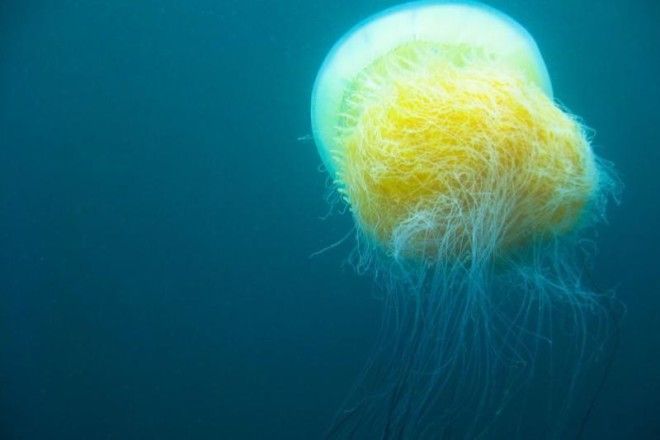
Though some argue that the Nomura’s jellyfish (Nemopilema nomurai), which is found in the waters near Japan, Korea, and China, is the largest jellyfish. At their biggest, Nomura’s jellyfish can reach 79 inches in bell diameter and up to 440 lbs. in weight.
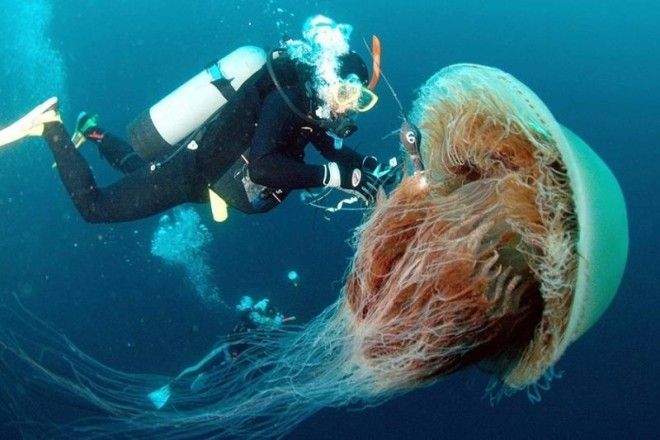
Jellyfish have been in the water for more than 500 million years. They beat the dinosaurs by a long shot, making them the world’s oldest multi-organ animal.
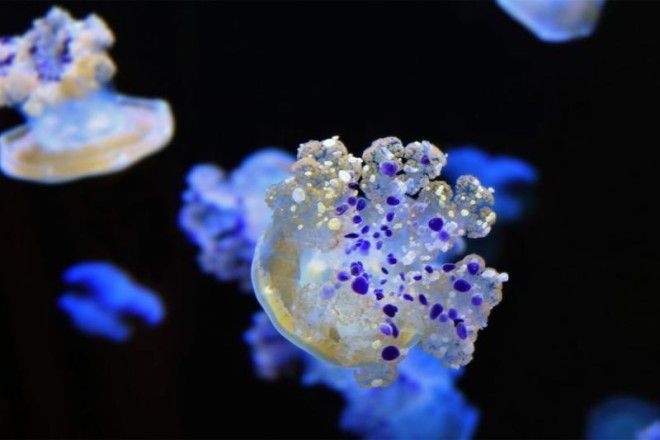
There are nearly 4,000 different types of jellyfish in the world with hydrozoa jellyfish accounting for at least 3,700 of them.

Environmental stress is believed to be the cause of jellyfish overpopulation. Climate change, pollution, dams, and overharvesting of fish have made it difficult for most other sea creatures to survive, but the adaptive nature of the jellyfish allows it flourish.

After it was accidentally introduced into Eastern Europe's Black Sea, the comb jellyfish spread rapidly, took over, and wiped out the sea’s $350 million fishing industry, consuming ten times its body weight in food in a single day.
Advertising

Watch out—a jellyfish tentacle can sting even if it’s separated from the body.
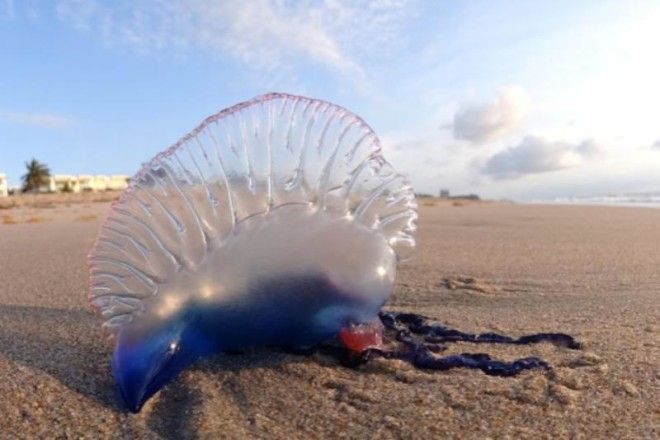
On average, jellyfish kill more people than sharks do.

The closer a jellyfish is to the water’s surface, the more likely it is to be colorless. Conversely, jellyfish that swim deeper tend be more colorful.
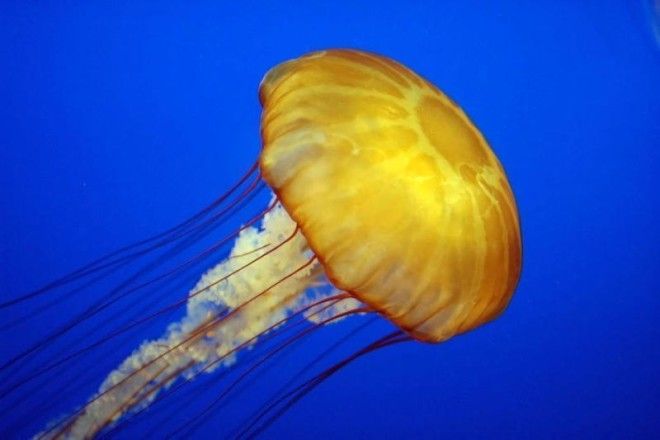
Sometimes, crabs will catch a ride on a jellyfish. The tough shells protect the crabs from the jellyfish’s stinging tentacles.
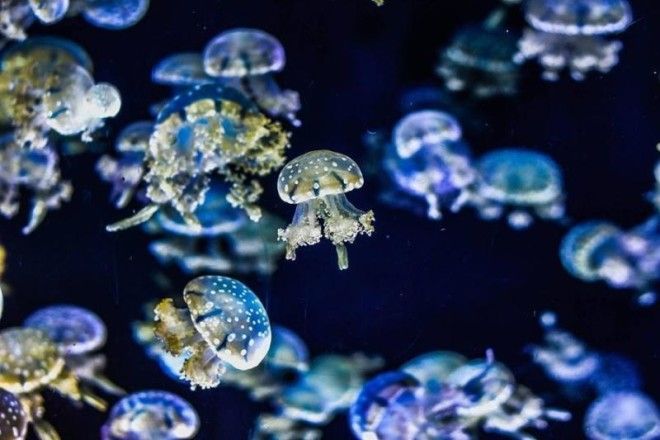
A group of jellyfish is called a bloom, a swarm, or a smack. A large bloom can contain 100,000 jellyfish.

A jellyfish is one of a few sea creatures that can adapt to ocean dead zones where there is lots of pollution but very little oxygen.
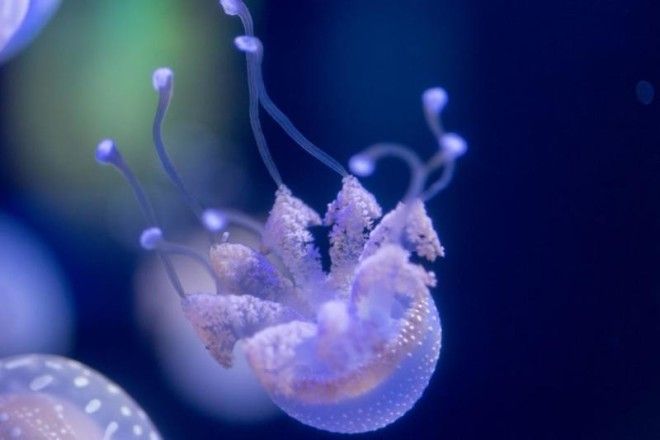
Because jellyfish feed on fish eggs and larvae, it’s extremely difficult for fish stocks to restablish themselves in marine ecosystems that are dominated by jellyfish.

Fishermen harvest jellyfish for their collagen, which has many medical uses including the treatment of rheumatoid arthritis.

The umbrella-like bodies of jellyfish allow them to pulse their way around the water. This unique movement is called passive energy recapture, and makes jellyfish the most energy efficient swimmers, allowing them to travel 30 percent farther per swimming cycle than they otherwise would be able to.

A military drone jellyfish named "Cyro" was engineered to conduct underwater military surveillance. The drone's design mimics the energy efficiency of a jellyfish, and can operate autonomously in the ocean.
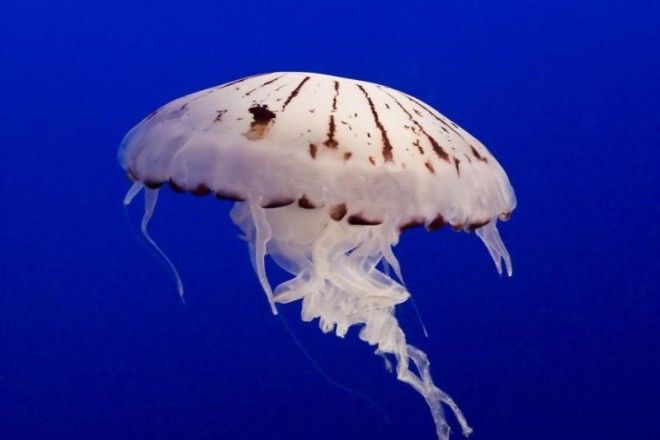
Jellyfish are passive hunters. Using their tentacles as a net, jellyfish capture prey such as plankton, fish, and crustaceans without much effort.

Contrary to popular belief, urinating on a jellyfish sting is ineffective.
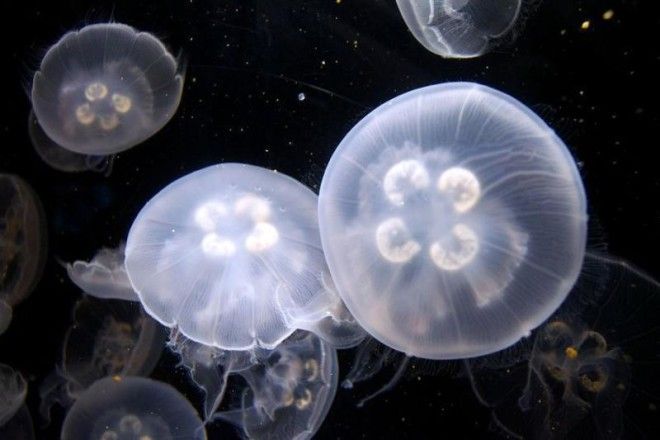
For most jellyfish stings, salt water is the recommended fast-acting treatment, as it does not encourage the release of venom. Fresh water usually has the opposite effect, causing the continuous release of venom.
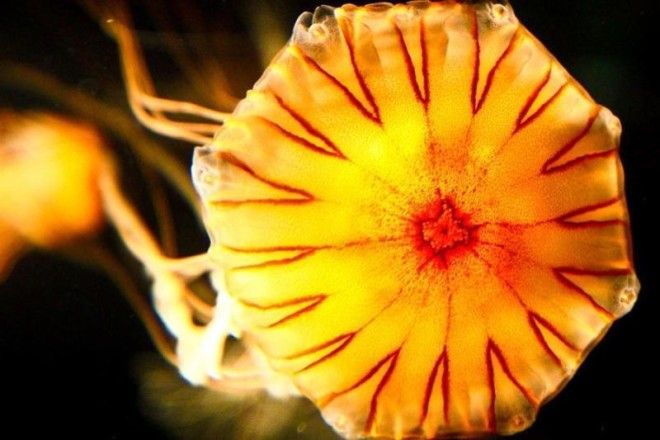
The immortal jellyfish (Turritopsis dohrnii) ages like Benjamin Button: when a crisis like starvation presents itself, the jellyfish’s cells transform and revert to their earliest form, a polyp, making this type of jellyfish potentially immortal.
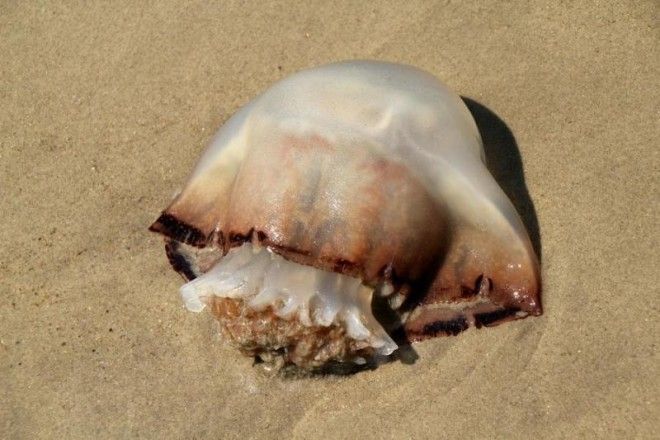
Certain non-poisonous species of jellyfish are considered a delicacy in various parts of the world. The Cannonball Jellyfish is the most common cuisine jelly.
